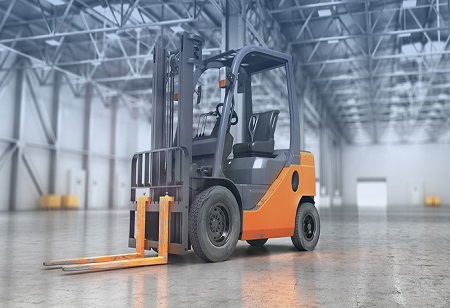Although the logistics &
material handling industry today are undergoing digital transformation, businesses are still struggling with conventional challenges & Material handling firms are labored with moving tons and tons of materials everyday while relying on a huge number of manual labors.
Warehouse management comprises organizing, managing as well as maintaining all these processes which occur in a warehouse, so that they run as smoothly as well as efficiently as possible. While some of these processes are automated and seemingly error-free, all warehouse processes are also prone to errors and challenges. As per a recent report from McKinsey & Company, around three hundred billion pound is spent every year, globally, on overall warehousing costs & that amount does not include the additional costs of correcting errors & mistakes.
Warehouse problems not only affect the speed & efficiency but they also affect the productivity of either a specific warehouse operation or the complete chain of processes which are linked with it. While in several cases, these errors are only found out after the process has commenced and, in few other cases, it is found after the process has been completed. And therefore, it becomes too late to prevent the error. Hence, with prior knowledge regarding the potential challenges that could take place in the warehouse operation, one can predict them beforehand & prevent the damage before it begins. We will be looking at some of the most common material handling challenges in warehouse management in this article.
Minimizing cost & increasing efficiency
Material handling is all about reducing costs and increasing efficiency, which is one of the main reasons why your workers should handle each material in the shortest possible time. This is where a conveyor system comes into play. A good conveyor system tries to limit the number of times the employees are required to touch the materials. It acts as the lifeblood of any storage area and if it is not automated, then moving & transporting materials will lead to spending a lot of money & risk employee health. In addition to this, a conveyor system can transport goods at a much
higher speed, typically and this means your site can handle more materials & manufacture goods faster.
Accidental redundancy
Most of the warehouses perform numerous operations on all items, & those operations together to create workflows. However, if a workflow is not well organized then it results in performing the same operation more than once, accidentally. These redundancies lead to increase in labor costs & consume extra time while you have to go back & reverse the mistake and this occurs most often in huge warehouses compared to the smaller ones, as there is more space as well as more inventory to deal with.
Since redundancy is most often noticed in order picking, it is when products are picked right from their storage locations in a warehouse for fulfilling an order. In smaller warehouses, order picking is a one-person job that has little room for error. However, in a larger warehouse, several people work together for picking products from various parts of the warehouse for fulfilling a single order. Therefore, the same order is passed around to several people, and there is a more chance for mistakes, like taking too many of the same products. One solution for this is to invest in technology like modern warehouse execution system, and this would help in automating the processes which are prone to redundancy in the warehouses. For example, to help decrease redundancy in order picking, one can implement barcode technology for scanning the products which have been picked for the order & have the system to notify the user of any duplicates.
Poor inventory management
If you have been witnessing any of these issues that include expecting to find a product in a specific location however realizing it is actually placed somewhere else, and accepting an order on the assumption which you hold enough stock for fulfilling it & only later getting to know that you do not have the stock such issues can be replaced with a backorder. It extends the order lead time significantly, and denying an order post assuming that you do not have enough stock to fulfill it, however then finding out that you do and trying to put away stock which you have received but having trouble finding where to place it.
One of the ways to address these challenges is by moving to a newer solution and it could be a system which is specific to inventory management that includes features of real-time inventory management. A typical 1st system first gathers all your inventory data via handheld/fixed device like the barcode scanner and this data information is further sent to your software solution, that catalogues & tracks your inventory.
The material handling market size is anticipated to reach USD 41.82 billion in 2023. Some of the major reasons bolstering the market growth include the growth in the ecommerce industry. The industry players of this market are focusing mainly on building customized equipment & systems which comprise manufacturing engineered systems & remotely tracked transport vehicles. Lastly, the rise in online shopping is anticipated to bolster the material handling market during the forecast period.
